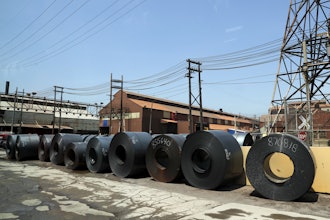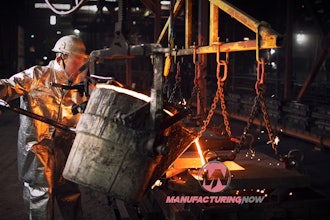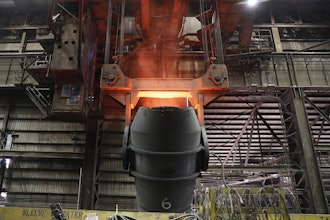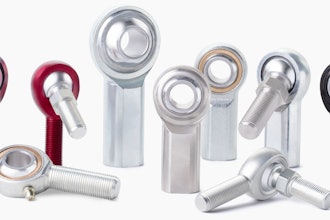
Industrial gearboxes are the workhorses of modern manufacturing facilities, playing a crucial role in converting high-speed drives to high-torque outputs. From mining operations to paper mills and food processing plants, these components represent a significant investment and are essential to operations. However, one of the leading causes of premature gearbox failure is often overlooked: contamination.
Studies have consistently shown that contamination control represents the single greatest opportunity for extending equipment life in the average maintenance program — and that it costs approximately ten times as much to remove contamination as it does to exclude it in the first place. Proper breather technology is key to addressing this challenge.
The Hidden Threat
Contamination in gearboxes falls into two primary categories: particulate contamination (dirt) and moisture contamination (water). Both forms significantly impact reducer performance, lubricant life and, ultimately, equipment reliability.
Particulate contamination consists of solid particles that enter the gearbox from the environment or that are generated internally through wear. These particles, some as small as 4 or 5 microns (for perspective, a human hair is approximately 65 microns in diameter), can cause extensive damage. When particles similar in size to the lubricant film thickness enter the system, they create abrasive wear between moving components.
The most damaging particles for lubricated machinery are those approximately the same size as the oil film (between 0.5 and 13 microns), which traditional filters have not been able to capture. Even a small amount of contamination can be catastrophic.
Moisture contamination occurs through several mechanisms, including temperature fluctuations that cause “breathing”. When the gearbox heats up during operation, internal air expands and is expelled, an acceptable event and generally not an issue. However, as the system cools, fresh air is drawn in, bringing moisture with it. As temperatures fall, this moisture condenses inside the gearbox and becomes mixed with the lubrication.
The effects of water contamination are severe,
and include:
- Reduced lubricating ability
- Corrosion of internal components
- Increased oxidation of oil (water can increase oxidation rates by more than 10 times)
- Shortened lubricant life
- Stripped additives
- Accelerated wear of components
In humid environments or facilities with frequent washdowns, moisture contamination becomes an even greater concern, potentially reducing service intervals to as little as 250 hours.
The First Line of Defense: Desiccant Breathers
As almost all gearboxes, reservoirs and storage tanks are designed to “breathe” (allowing air exchange as the system heats and cools), controlling what enters the system becomes critical. This is where breather technology plays a vital role.
Evolution of Breather Technology
The industry has evolved significantly from traditional open tube turndown pipes that did little more than “keep the birds out.” Standard OEM caps typically filter particles down to only 40 microns and provide no protection against moisture. By contrast, modern desiccant breathers represent a significant advancement, offering:
- Filtration down to 3 microns or less: this prevents damaging particulates from entering the system.
- Incoming moisture removal: using silica gel or other desiccants to capture moisture from incoming air.
- Internal moisture removal: even extracting moisture from within the reservoir during breathing cycles.
The return on investment for implementing proper breather technology is substantial:
- Elimination of water contamination through the breather
- Removal of water contamination from the reservoir
- Prevention of rust and corrosion
- Increased oil life
- Improved lubricant performance
- Reduced abrasive wear
- Reduced rebuild/replacement costs
- More reliable production
- Reduced machine downtime
The Next Evolution: Intelligent Breather Technology
While traditional desiccant breathers have proven effective as a first line of defense, recent technological advances have introduced a new generation of intelligent connected breathers that integrate with condition monitoring systems to be the next evolution in contamination control — allowing maintenance teams to remotely monitor breather status in real-time and providing several critical advantages:
- Breather life monitoring: instead of relying solely on color change indicators that require visual inspection, intelligent breathers can continuously monitor saturation levels and predict remaining useful life.
- Rate of saturation tracking: by monitoring how quickly a breather is becoming saturated, maintenance teams can identify changes in environmental conditions or potential issues with the gearbox. This can also be used to detect a clogged filter, a common issue with traditional breathers.
- Airflow temperature measurement: temperature data provides insights into operating conditions and potential overheating issues.
- Saturation direction tracking: this helps identify whether contamination is primarily entering from outside or being generated within the system.
- Battery life monitoring: ensures the monitoring system itself remains operational.
Enhanced Safety Through Remote Monitoring
Beyond the technical advantages, intelligent breather technology offers significant safety benefits. As gearboxes are often located behind guarding in dangerous, difficult-to-access applications, an intelligent breather connected to a condition monitoring platform not only improves gearbox reliability but provides customers with a safe, hands-free way to monitor their gearboxes versus traditional visual inspection methods.
This remote monitoring capability reduces the need for technicians to access potentially hazardous areas for routine inspections, enhancing workplace safety while improving maintenance efficiency.
Implementation Considerations for Distribution Channels
For distribution channels supporting industrial customers, understanding the following key implementation factors can help guide end-users toward optimal contamination control solutions:
- Environment assessment: selecting the appropriate breather technology for their operations based on environmental conditions.
- Maintenance program integration: identifying how the breather technology should be implemented into an existing comprehensive maintenance program.
- Proper sizing and compatibility: considering the proper size and compatibility with different gearbox models and sizes along with application needs — from airflow requirements to environmental conditions, lubrication type and water absorption capacity.
Conclusion
Contamination control represents one of the most cost-effective approaches to extending gearbox life and improving reliability. By implementing appropriate breather technology – whether traditional desiccant breathers or advanced intelligent monitoring solutions – industrial facilities can significantly reduce maintenance costs, extend equipment life and enhance operational efficiency.
As the industrial world continues to move towards smarter, more connected systems, the integration of breather technology with condition monitoring platforms represents not just an incremental improvement but a transformative approach to contamination control. For distribution channels, understanding and communicating these benefits to end-users provides substantial value in helping customers achieve their reliability and efficiency goals.
Connor Jackson is the sensors manager of industrial Internet of Things technologies at Dodge Industrial.























